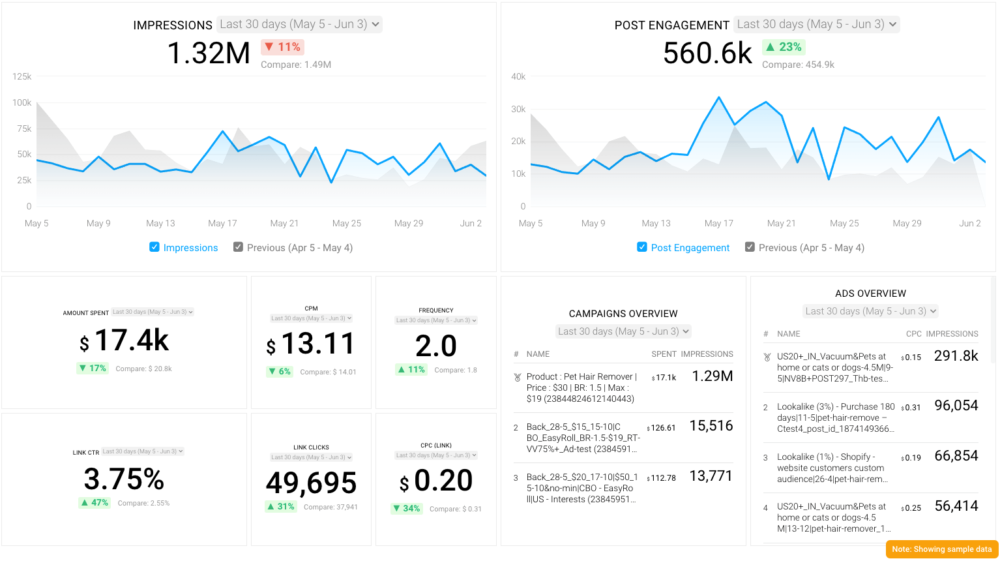Table of contents
Organic reach on Facebook may be on life support, but Facebook ads are still a great way to drive traffic and generate conversions.
In some of our recent surveys, we discovered that:
- 54% of marketers believe Facebook ads are very effective for generating sales.
- Many have average click-through rates above 10%.
- More than half enjoy customer acquisition costs of $10 or less.
- Both agencies and small businesses consider Facebook ads more effective than boosting posts, so much so that 80% of their budget is spent on ads.
So for our latest survey, we set out to discover how marketers optimize their Facebook ad copy to increase clicks and conversions.
Most of the marketers who responded create their Facebook ad copy in-house:
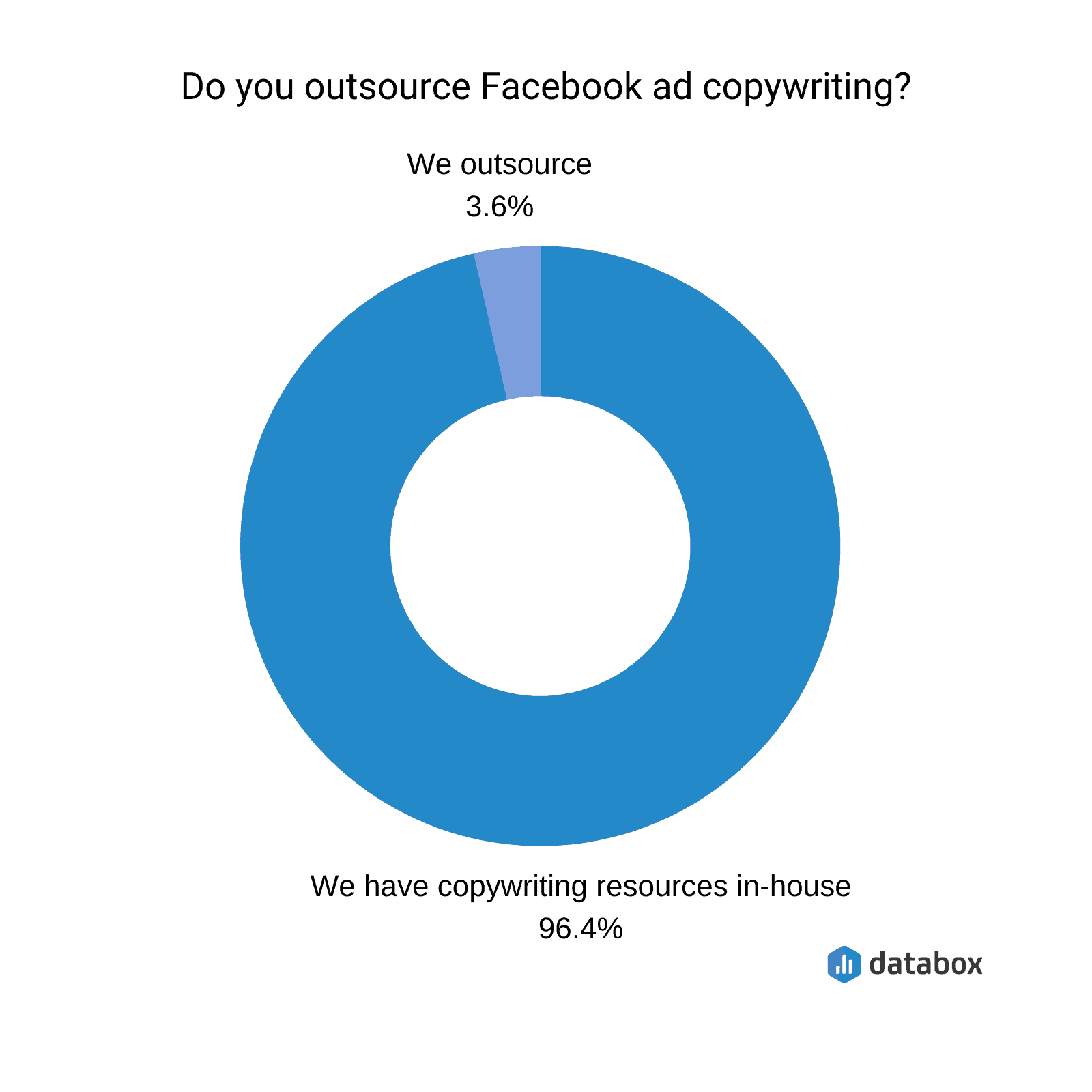
And nearly two-thirds say conversions are the primary goal for any ad campaign they run:
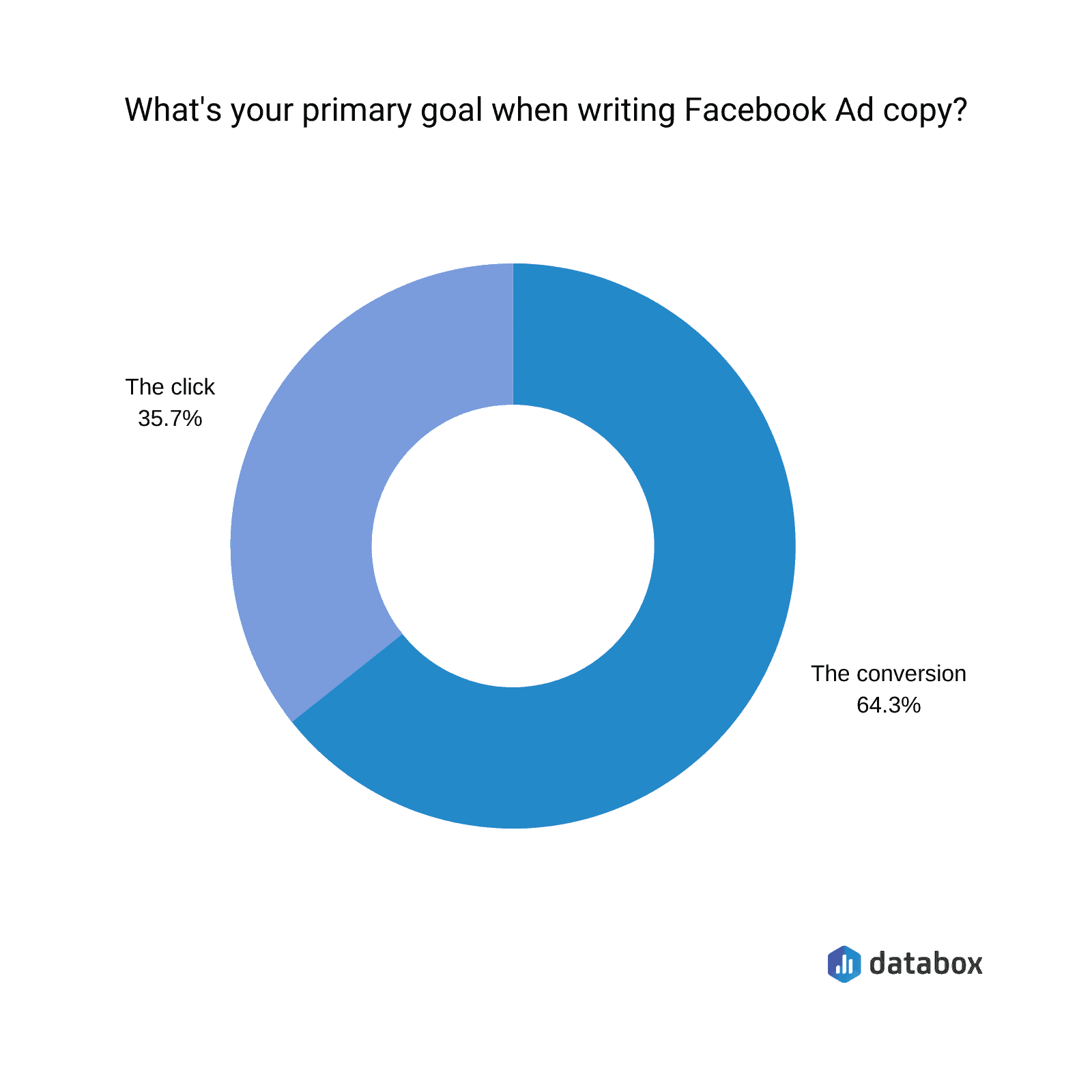
These experts shared their top copywriting tips for creating Facebook ads that convert.
Use these 21 tips (and example ads) to optimize the copy for your next Facebook ad campaign.
Before You Start Writing, Consider These Best Practices
Before you dive into ways to optimize specific sections of your Facebook ad copy, consider these tips for optimizing your ad as a whole.
1. Know Your Audience
Aneesh Babu of Backlinkminds says you should do two things before creating Facebook ads: “Do a competitive analysis and understand your audience.”
OptimizePrime’s Harris Schachter agrees and recommends considering how you built the audience you’re targeting when determining what to include in specific ads.
“Is it built from a lookalike audience? If so, send a survey to those people and find out what they care about.”
“Is it a retargeting campaign based on a section of your site or (hopefully) a specific page/topic? If so, consider what other retargeting information can you leverage in your copy.”
2. Consider How Your Published Ad Displays
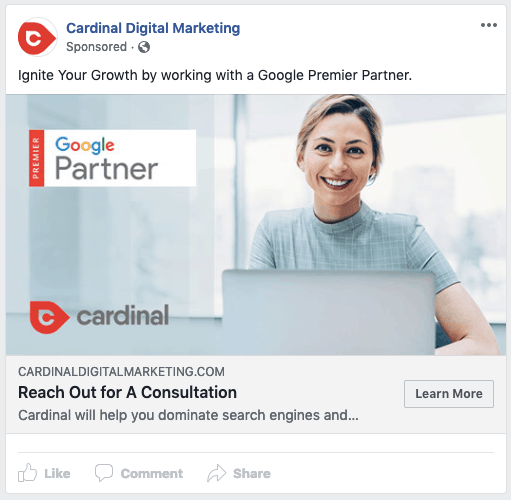
The headline of your Facebook ad isn’t necessarily the first copy that displays, so Cardinal Digital Marketing’s Alex Membrillo recommends considering the location of your copy on published ads to determine where to put certain pieces of information.
“In certain Facebook ad types, the headline actually appears below the image (or video), so I recommend using your marketing copy in the ad’s body section and including your call-to-action in the headline. ”
“Based on the location of the headline, it’s the perfect place to showcase special rates or discounts—or to prompt users to act or book now.”
3. Define Goals for Each Component of Your Ad
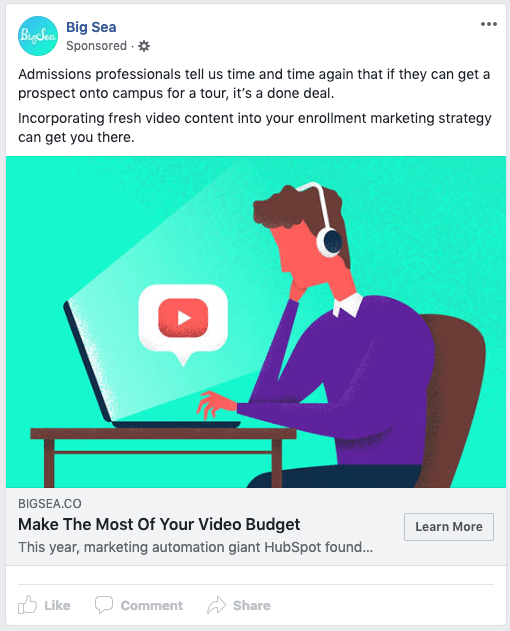
Big Sea’s Autumn Sullivan recommends “breaking down a Facebook ad into its components—text, headline, description, image, CTA—and then defining the purpose of each component.”
“The text should address customers’ pain points and offer solutions. The headline should get—and hold—their attention. The description provides details and builds trust.”
“Facebook CTA options are limited, but I try to choose the one that most closely matches the action I want the person to take.”
PRO TIP: What’s the overall engagement of your ad campaigns?
Want to make sure your Meta ads are performing and trending in the right direction across platforms? There are several types of metrics you should track, from costs to campaign engagement to ad-level engagement, and so on.
Here are a few we’d recommend focusing on.
- Cost per click (CPC): How much are you paying for each click from your ad campaign? CPC is one of the most commonly tracked metrics, and for good reason, as if this is high, it’s more likely your overall return on investment will be lower.
- Cost per thousand impressions (CPM): If your ad impressions are low, it’s a good bet everything else (CPC, overall costs, etc.) will be higher. Also, if your impressions are low, your targeting could be too narrow. Either way, it’s important to track and make adjustments when needed.
- Ad frequency: How often are people seeing your ads in their news feed? Again, this could signal larger issues with targeting, competition, ad quality, and more. So keep a close eye on it.
- Impressions: A high number of impressions indicates that your ad is well optimized for the platform and your audience.
- Amount spent: Tracking the estimated amount of money you’ve spent on your campaigns, ad set or individual ad will show you if you staying within your budget and which campaigns are the most cost-effective.
Tracking these metrics in Facebook Ads Manager can be overwhelming since the tool is not easy to navigate and the visualizations are quite limiting. It’s also a bit time-consuming to combine all the metrics you need in one view.
We’ve made this easier by building a plug-and-play Facebook Ads dashboard that takes your data and automatically visualizes the right metrics to give you an in-depth analysis of your ad performance.
With this Facebook Ads dashboard, you can quickly discover your most popular ads and see which campaigns have the highest ROI, including details such as:
- What are your highest performance Facebook Ad campaigns? (impressions by campaign)
- How many clicks do your ads receive? (click-through rate)
- Are your ad campaigns under or over budget? (cost per thousand impressions)
- What are your most cost-efficient ad campaigns? (amount spent by campaign)
- How often are people seeing your ads in their news feed? (ad frequency)
And more…
You can easily set it up in just a few clicks – no coding required.
To set up the dashboard, follow these 3 simple steps:
Step 1: Get the template
Step 2: Connect your Facebook Ads account with Databox.
Step 3: Watch your dashboard populate in seconds.
4. Choose the Most Important Component
Finally, Robert Johns of UNINCORPORATED recommends considering your ad as a whole:
“Writing copy for Facebook ads is a lot like writing copy for pre-internet print ads. In our experience, the copy and the creative need to work together, and only one can do a majority of the work.”
“Have a punchy piece of creative like a high-energy video? Keep your copy short and to the point so that the video does the work.”
“If you don’t have a great piece of creative, focus on writing a strong headline and then backing it up with secondary copy.”
Follow These Tips to Craft Headlines That Capture Attention
Cardswitcher’s Stephen Hart argues that the headline is “the most important copy element when it comes to a Facebook ad. It’s the thing that catches attention and makes all the difference between whether prospects click—or don’t click—on your ad.”
Most of the respondents to our latest survey agree that the headline of your Facebook ad is key:

Hart recommends “using simple and powerful language that creates an emotional response in your reader. Be sure to focus on a single thought or idea, and make it bold.”
Our other respondents offered several more suggestions for optimizing Facebook ad headlines.
5. Use Evocative Words
BOOM Marketing Agency’s Mate Arion Adamecz says to include evocative words and stories in your ads, “something that wakes people up and pulls them away from reality. It’s essential to make an impact on the feelings—not on the brain.”
And according to Jeff Rizzo of The Slumber Yard, “The word ‘exclusive’ has to be in your copy. We’ve run about $50,000 worth of ads, and those that included the word ‘exclusive’ performed significantly better.”
6. Include Numbers
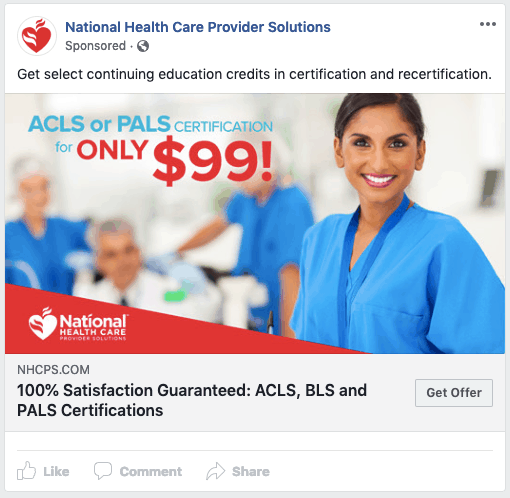
National Health Care Provider Solutions’ Mackenzie Thompson recommends “using numbers, percents, or any data/numerical facts you have to catch the audience’s attention.”
“Think of it like how you would format your resume. You want to capture attention, so showcase impressive numbers to intrigue your audience.”
7. Use Brackets
Finn Hayden of ATYNTK suggests using brackets in your copy.
“It sounds simple, but using brackets in your sentences has been proven countless times to draw attention, particularly in ad copy.”
“We’ll often use terms like “[last chance],” which creates urgency and helps drive more clicks.”
8. Ask a Question
“Ask a question to build engagement among your audience,” says Jake McKenzie of Auto Accessories Garage. “Questions are always more effective than statements.”
Design Rush’s Angelina Harper agrees: “I usually write a question that will make my audience think about their needs, and my product is the answer.”
And Ollie Roddy of Catalyst Marketing Agency says that questions are particularly useful for carousel ads: “Starting with a question is a great way to go. With Facebook’s carousel ads, you can ask a key question and then answer it over the next few slides.”
9. Call Out Your Audience
James Marques of Iconic Genius says, “Calling out my audience in the headline works the best for me.”
“For example, if I was a realtor, my ad would start out by asking ‘Looking to sell your home for more than what it’s worth?’ People who are interested in selling their homes will think ‘Yes, of course!’ Now, I have the attention of interested and qualified prospects, and better yet, I have them already saying yes to me.”
“The other example is more local. Let’s say I’m a restaurant owner that lives in Raleigh, North Carolina. I would start my ad out by saying, ‘Attention Raleigh!’ What this does is grab the attention of everyone who lives in that area.”
“These two strategies have generated the most customers for my clients.”
Consider These Suggestions to Craft Body Copy that Converts
Once you’ve picked the right ad type and crafted the perfect headline, it’s time to focus on the rest of your ad’s copy. Our respondents offered several different suggestions for writing compelling Facebook ad body copy.
10. Spend Most of Your Time on the First 200 Characters

Chris Mechanic of WebMechanix recommends “spending most of your writing time crafting the first 200 characters of text.”
“Think of it like it’s the headline of your ad. It’s the one thing users are going to see. If you can draw them in and get them to click the ‘See More’ button, you’ll increase your dwell time, which has a powerful effect on relevancy scores.”
“If you have an hour to write an ad, spend at least 30 minutes crafting the perfect lead—one that’s going draw people into your post and compel them to spend time with it.”
11. Use the Language Your Customers Use
“When it comes to writing ads for Facebook,” says Steve James of Stream Creative, “nothing beats voice-of-customer data.”
“We do this by listening to sales calls, reading online reviews, scouring historical social media comment threads, and reviewing contact form submissions so we can better understand customer pain points and speak their language.”
“Using voice-of-customer data ensures our headlines and body copy reflect the true terms, tone, and emotion behind the real questions and concerns customers or prospects have.”
12. Keep it Casual
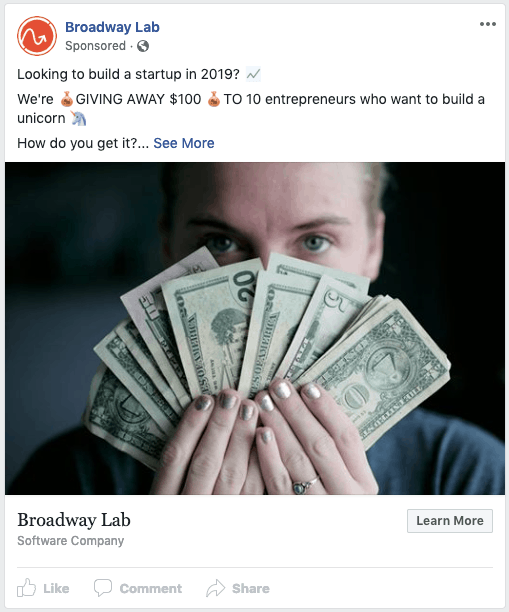
“One technique we use is to write the way that we speak,” says Mitchell Cohen of Broadway Lab.”
“Using more casual language—in addition to using all-caps or bolding words—makes it far easier for the reader to quickly understand the message.”
“We’ve seen engagement with our posts more than triple since applying this simple concept.”
13. Use Short Words/Sentences and Include Emojis
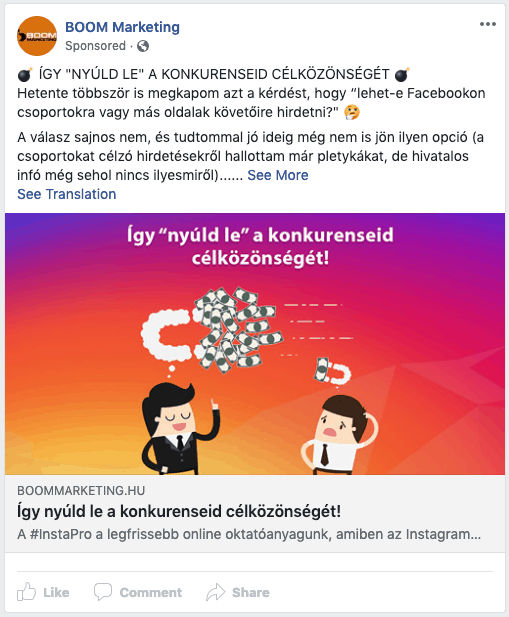
“If you want your ad to be read, you should use a conversational tone,” says Alexandra Zelenko of DDI Development. “Imagine that you’re telling a good friend about a new product or service when writing your copy—and don’t forget to use appropriate emojis.”
“When you’re done writing your copy, read it out loud and pay attention to the places where you have to stop and take a breath. These are places where you could probably do with shorter words and sentences.”
“Pay attention to any phrase or sentence that sounds awkward or feels like a tongue twister to say, and clean up these areas.”
14. Make it Scannable
Jonathan Aufray of Growth Hackers recommends making your copy scannable.
“It has to be easy to read. Don’t be shy with white space. Write a sentence, add a line break, write another sentence, add another line break, and so on.”
“I also recommend adding bullet points to your copy whenever possible and relevant.”
15. Focus on Specific Pain Points and Benefits
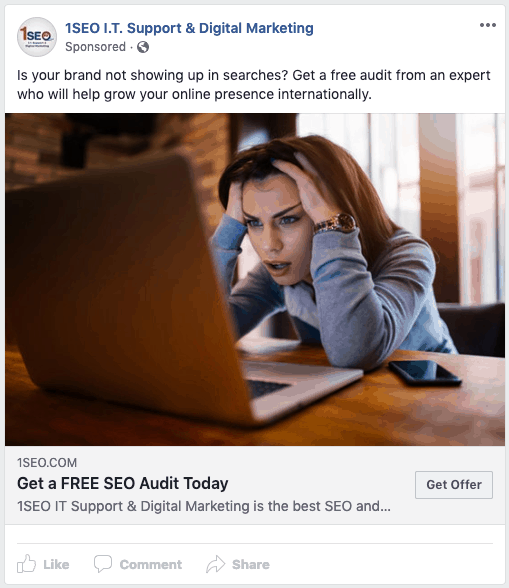
“Don’t beat around the bush,” says Taylor Hurff of 1SEO I.T. Support & Digital Marketing. “Hit your customers’ pain points directly, and speak to the cost-savings benefits of your products whenever appropriate.”
“For instance, an auto body shop could have an ad that says, ‘A roadside breakdown can cost upwards of $[amount] before repairs. At [business], pay just $[amount] for an oil change, tune-up, and inspection to keep your future maintenance costs to a minimum!’”
“This grabs the reader’s attention, gets them to think critically about their vehicle and the cost of a breakdown, and offers an affordable alternative to the problem you’ve generated concern about.”
16. Include Social Proof

ClickUp’s Josh Spilker says, “You’ve got to show social proof of some sort. Mentioning positive reviews, including quotes from reviews, or mentioning specific users will put your ad over the top.”
“If you’ve done your targeting right, you already have the audience who’s interested in your product/service, and the reviews will make them click.”
17. Tell a Story
Empty Desk Solutions’ Brittany Hardy has a special term for her ad copywriting approach: “storyselling.”
“Our go-to for ad copywriting is to tell a story. We use ‘storyselling’ as a way to get our potential clients on the same page and make the story relatable to them.”
“Once we’ve told the first part of the story, we try to figure out how to get them to have their own ‘aha’ moment towards the end. Then, we introduce the CTA for how to help them.”
“Generally, these are soft-sell type ads trying to get prospects to opt-in to a webinar, download free content, etc.”
18. Be Clear About Costs
“Being vague about the cost of your product or the percentage of the discount you’re giving is one of the worst things you can do for your Facebook ad,” says Grace Carter of UKWritings. “People want to know upfront how much it will cost them since price is one of the main factors in the decision-making process.”
“Instead of being vague, lead with those numbers. Show them exactly what you’re offering. They will trust you more, and the price might even attract their attention.”
“It might not be the first thing that comes to mind when you think of great copy, but it’s one of the best things you can do. Ads of this type are helpful and useful to the customer, making it easier for them to make a decision right away.”
19. Speak to Individuals
“Always address your audience as if you’re targetting one and only one person,” says Smallpdf’s Hung Nguyen. “Use ‘you’ instead of ‘you all’ or ‘our users.’”
“Personalization maximizes engagement, minimizes CPC, and helps you stand out of the abundance of ads users see every day on Facebook.”
Advance B2B’s Jesse Särmö agrees: “Narrow your audience, talk directly to your buyer persona, and run different ads for different people. Tell them how they can benefit from your product/service instead of telling them how awesome it is.”
What’s the Ideal Length for Facebook Ad Body Copy?
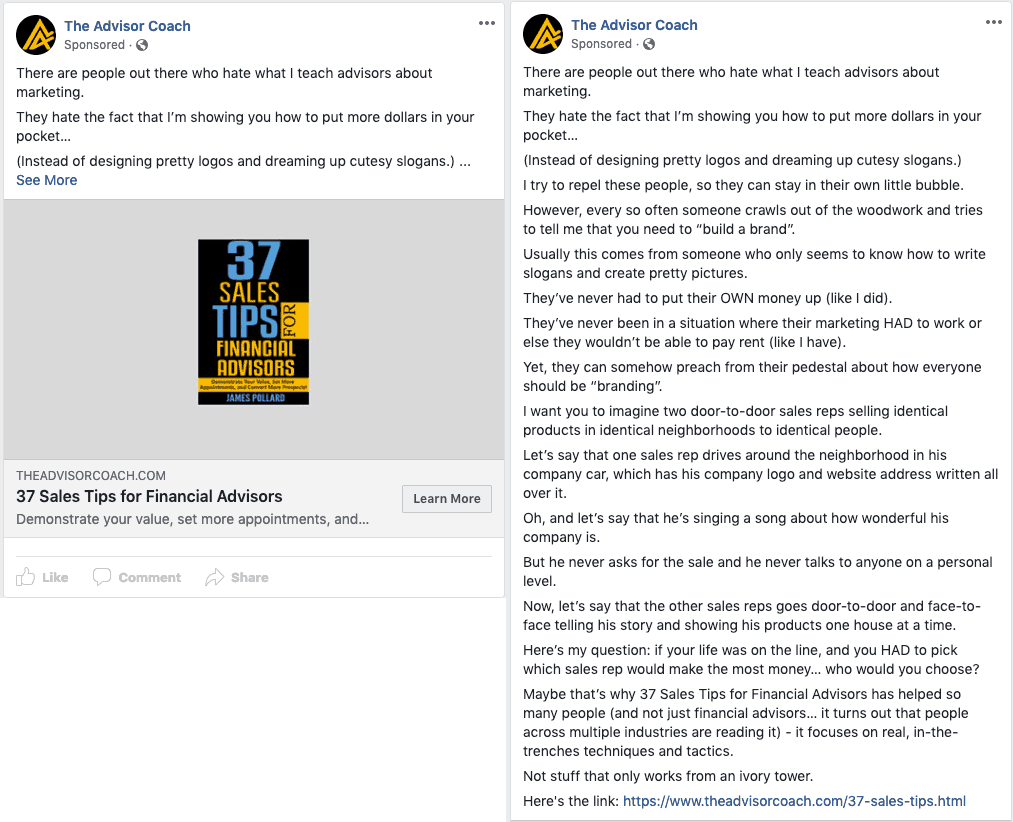
Our final two tips are both related to how long your Facebook ad’s body copy should be, and both tips contradict each other.
20. Keep It Short
“There is so much content that Facebook users need to sift through every minute,” says Stephanie Sharlow of DesignRush. “Therefore, ads need to implement short, snappy, and unique copy to captivate potential consumers without wasting time.”
“My go-to technique is to frontload the main message and keep the copy as short as possible. It sounds simple, but you’d be amazed how many brands and agencies write multi-sentence captions and ad copy that doesn’t give consumers any direction.”
“When in doubt, just tell them exactly what they need to do or know,” Sharlow says.
Lightbulb Media’s Lewis Kemp agrees: “Attention spans are at an all-time low. Stop wasting valuable characters on corporate jargon and simplify what you’re trying to say.”
“Your product or service is completely meaningless unless you can illustrate how it directly benefits the customer’s life. If you can’t do this in two sentences, you probably need to reassess the USP of your product.”
21. Write Long-Form Ad Copy
James Pollard of The Advisor Coach actually recommends the opposite approach: “My go-to copywriting technique for writing great ads on Facebook is to use long copy written in a story format.”
“In almost every single test I’ve conducted, long copy has beaten short copy. Writing the ad in a story format helps hook readers and keep their attention.” Find out what length works best for you using this social media dashboard software.
So What’s The Right Answer?
So which is better: short Facebook ads or long copy? Unfortunately, our respondents can’t answer that question for you. It depends on a lot of different things: your audience, your product, your skills as a copywriter, what time of day your audience sees your ad, etc.
The only way to find the right answer for your business is to run an A/B test—or several—and see which version generates the most clicks and conversions using a social media dashboard.
And that’s true for all of the tips our respondents provided. Consider these tips for inspiration, then test them to find those that work best for your business.







